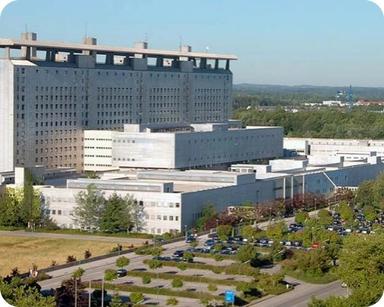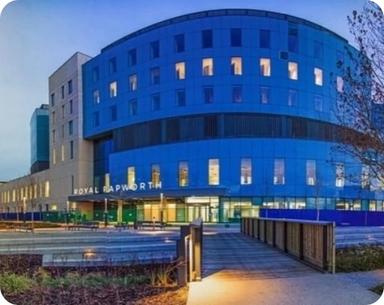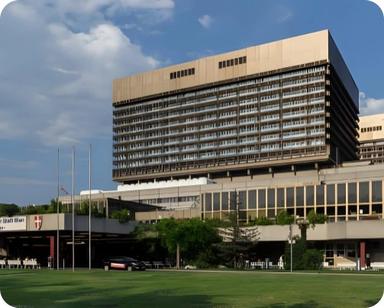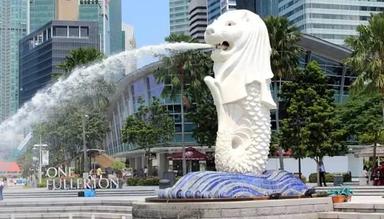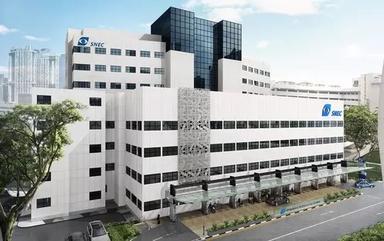الحزم تبدأ من
$7000
هل تحتاج إلى مساعدة في اختيار الحزمة المناسبة لرحلتك الطبية؟
بياناتك الصحية محمية معنا

تحويل الحياة بـ جراحة العمود الفقري مع استئصال المجهرية وتثبيت العمود الفقري
تعد جراحة العمود الفقري التي تتضمن استئصال القرص المجهري والتثبيت نهجًا شاملاً يستخدم لعلاج اضطرابات العمود الفقري المحددة التي تنطوي على ضغط الأعصاب وعدم استقرارها. يجمع هذا الإجراء بين استئصال الدقيقة ، وهي تقنية غازية الحد الأدنى لإزالة أجزاء من القرص الفتق الذي يضغط على الأعصاب الشوكية ، مع تثبيت العمود الفقري ، الذي يستقر على العمود الفقري باستخدام أجهزة مثل البراغي والقضبان. غالبًا ما يتم استخدام هذا النهج المزدوج لمعالجة الألم الشديد ، واختلال وظائف الأعصاب ، وعدم الاستقرار الهيكلي في العمود الفقري.
نظرة عامة على الإجراء:
- استئصال القرص المجهري: يركز هذا الإجراء على تخفيف ضغط الأعصاب. يتضمن استخدام مجهر أو أداة مكبرة لإزالة الجزء الصغير من القرص الفتق الذي يؤثر على العصب. يسمح استخدام التكبير بإجراء شق أصغر ويهدف إلى تقليل الضرر الذي يلحق بالأنسجة المحيطة.
- تثبيت العمود الفقري: بعد أو أثناء عملية استئصال القرص المجهري، يتم إجراء تثبيت العمود الفقري لتعزيز استقرار العمود الفقري. يتضمن هذا الجزء من الجراحة إدخال أجهزة مثل قضبان ومسامير لعقد الفقرات في مكانها ، ومنع الحركة غير الطبيعية وتوفير بيئة مستقرة للعمود الفقري للشفاء وربما تندمج.
فوائد:
- يمكن أن يؤدي النهج المشترك لاستئصال الدقيق والتثبيت إلى تخفيف كبير للألم ، والتنقل المستعاد ، وانخفاض خطر عدم استقرار العمود الفقري في المستقبل.
- تعمل تقنيات التدخل الجراحي البسيط على تقليل الصدمات الجراحية وتقليل آلام ما بعد الجراحة وتسريع أوقات الشفاء.
استعادة:
- بعد الجراحة، يخضع المرضى عادة لبرنامج إعادة تأهيل منظم يتضمن العلاج الطبيعي لتقوية الظهر وتعزيز المرونة.
- تختلف مدة الانتعاش بناءً على الصحة العامة للفرد ، ومدى الجراحة ، واستجابة الشفاء للجسم. بشكل عام، يمكن للمرضى أن يتوقعوا العودة إلى الأنشطة الخفيفة في غضون بضعة أسابيع، مع التحسن المستمر على مدى عدة أشهر.
النتائج:
- يعاني معظم المرضى من راحة كبيرة من الأعراض وتحسين نوعية الحياة. يعتمد نجاح الجراحة إلى حد كبير على التقنية الجراحية المناسبة ، والالتزام بالمريض على الرعاية بعد العملية الجراحية ، وإعادة التأهيل المناسبة.
تعتبر جراحة العمود الفقري مع استئصال القرص المجهري والتثبيت علاجًا دقيقًا وموجهًا يعالج الأعراض والأسباب الجذرية لخلل العمود الفقري، مما يوفر راحة واستقرارًا فعالين للمرضى الذين يعانون من حالات العمود الفقري المعقدة.
5.0
91% مصنف قيمة مقابل المال
لماذا تختارونا؟
99%
معدل النجاح
0
جراحة العمود الفقري مع استئصال المجهرية وتثبيت العمود الفقري الجراحين
0
جراحة العمود الفقري مع استئصال المجهرية وتثبيت العمود الفقري
0
المستشفيات في جميع أنحاء العالم
0
الحياة التي تم لمسها
نظرة عامة
تعد جراحة العمود الفقري التي تتضمن استئصال القرص المجهري والتثبيت نهجًا شاملاً يستخدم لعلاج اضطرابات العمود الفقري المحددة التي تنطوي على ضغط الأعصاب وعدم استقرارها. يجمع هذا الإجراء بين استئصال الدقيقة ، وهي تقنية غازية الحد الأدنى لإزالة أجزاء من القرص الفتق الذي يضغط على الأعصاب الشوكية ، مع تثبيت العمود الفقري ، الذي يستقر على العمود الفقري باستخدام أجهزة مثل البراغي والقضبان. غالبًا ما يتم استخدام هذا النهج المزدوج لمعالجة الألم الشديد ، واختلال وظائف الأعصاب ، وعدم الاستقرار الهيكلي في العمود الفقري.
نظرة عامة على الإجراء:
- استئصال القرص المجهري: يركز هذا الإجراء على تخفيف ضغط الأعصاب. يتضمن استخدام مجهر أو أداة مكبرة لإزالة الجزء الصغير من القرص الفتق الذي يؤثر على العصب. يسمح استخدام التكبير بإجراء شق أصغر ويهدف إلى تقليل الضرر الذي يلحق بالأنسجة المحيطة.
- تثبيت العمود الفقري: بعد أو أثناء عملية استئصال القرص المجهري، يتم إجراء تثبيت العمود الفقري لتعزيز استقرار العمود الفقري. يتضمن هذا الجزء من الجراحة إدخال أجهزة مثل قضبان ومسامير لعقد الفقرات في مكانها ، ومنع الحركة غير الطبيعية وتوفير بيئة مستقرة للعمود الفقري للشفاء وربما تندمج.
فوائد:
- يمكن أن يؤدي النهج المشترك لاستئصال الدقيق والتثبيت إلى تخفيف كبير للألم ، والتنقل المستعاد ، وانخفاض خطر عدم استقرار العمود الفقري في المستقبل.
- تعمل تقنيات التدخل الجراحي البسيط على تقليل الصدمات الجراحية وتقليل آلام ما بعد الجراحة وتسريع أوقات الشفاء.
استعادة:
- بعد الجراحة، يخضع المرضى عادة لبرنامج إعادة تأهيل منظم يتضمن العلاج الطبيعي لتقوية الظهر وتعزيز المرونة.
- تختلف مدة الانتعاش بناءً على الصحة العامة للفرد ، ومدى الجراحة ، واستجابة الشفاء للجسم. بشكل عام، يمكن للمرضى أن يتوقعوا العودة إلى الأنشطة الخفيفة في غضون بضعة أسابيع، مع التحسن المستمر على مدى عدة أشهر.
النتائج:
- يعاني معظم المرضى من راحة كبيرة من الأعراض وتحسين نوعية الحياة. يعتمد نجاح الجراحة إلى حد كبير على التقنية الجراحية المناسبة ، والالتزام بالمريض على الرعاية بعد العملية الجراحية ، وإعادة التأهيل المناسبة.
تعتبر جراحة العمود الفقري مع استئصال القرص المجهري والتثبيت علاجًا دقيقًا وموجهًا يعالج الأعراض والأسباب الجذرية لخلل العمود الفقري، مما يوفر راحة واستقرارًا فعالين للمرضى الذين يعانون من حالات العمود الفقري المعقدة.


